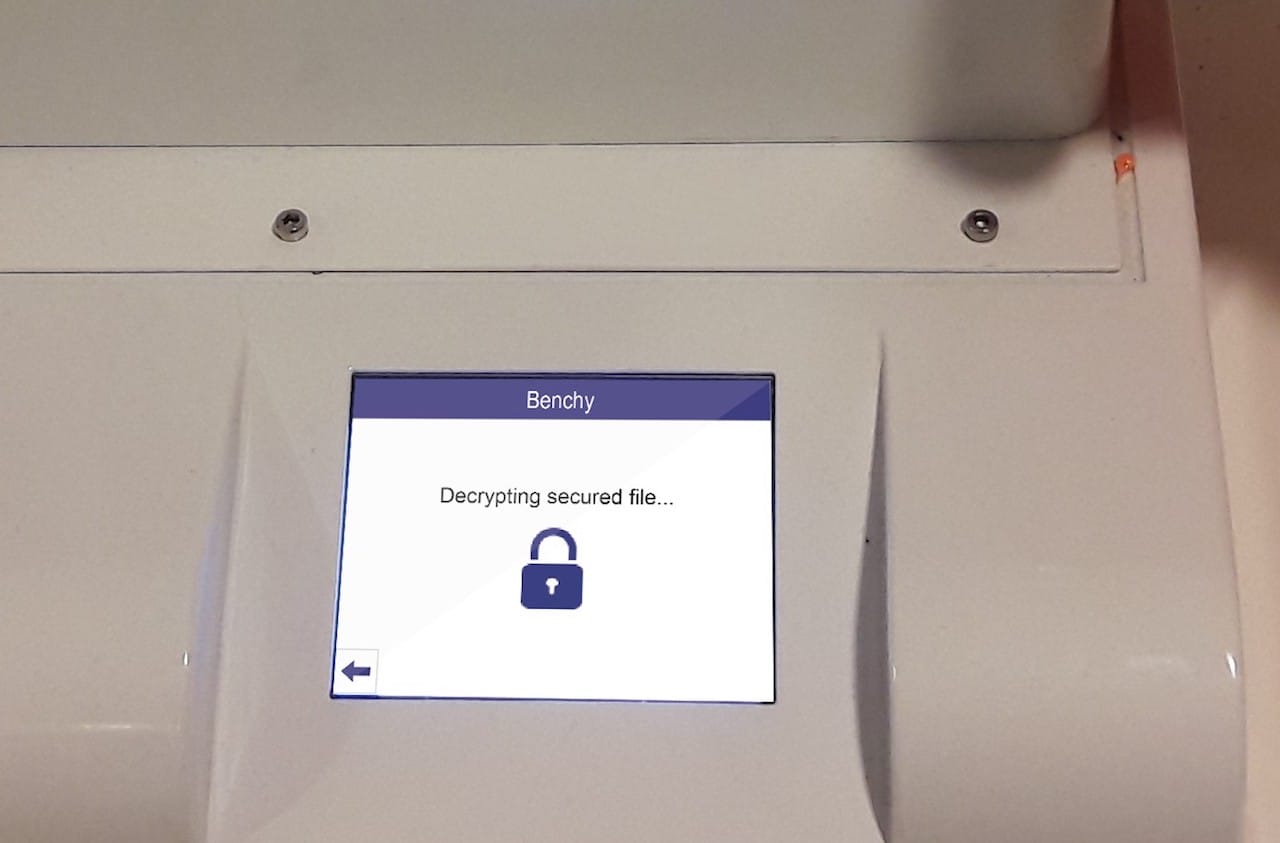
Create it REAL is a Danish company producing high-powered control boards for desktop 3D printers. So what does this have to do secure printing?
They’re attempting to address an insidious problem in the online 3D print world: design theft.
As the protocols stand today, virtually all 3D printers require STL (or equivalent) format files to operate. These files contain a 3D description of the desired object. If you possess the STL file, then you essentially own that object and can, without technical constraint, reproduce, alter, sell or otherwise perform acts that would excite or infuriate the original designer.
STL files are completely insecure and are easily compromised. Even worse, when receiving a STL file they can be intercepted during transmission and copied.
This is not a good state of affairs if you happen to be a 3D designer who’s spent weeks designing an innovative object, only to have it captured by bad guys and made available elsewhere online.
This situation has caused many designers to shun this area of exploration, as there is little profit available if your designs are easily absconded by others.
And that has put a damper on the development of desktop 3D printing, and perhaps even killed off the consumer aspect of the technology. Consumers won’t buy 3D printers if there’s nothing to print, and there’s nothing to print if designers won’t design things.
Enter Create it REAL. Their product is a super-powerful control board for desktop 3D printers that can dramatically increase the speed of 3D printing. The printing increase occurs because the speed of the control board’s processor is so fast it can deliver the real-time calculations necessary to drive the stepper motors at a much more rapid pace.
Here’s their new idea:
Based on their unique real-time processor which allows a print speed up to five times faster than standard FDM printers, the chip is now able to decrypt secured files directly in the printer. This means that end-users can print 3D objects without the need to access the original file.
The encrypted approach has been attempted before, but through streaming the printer instructions over the internet. While secure, there are two issues: speed of printing and reliability. Should the stream be broken during 3D printing operations, you might have yourself a print failure.
It seems that the Create it REAL proposal might not involve streaming, and the recipient could hold the encrypted print file locally for reliable 3D printing – at speed.
This could certainly work, technically. It’s also possible that the encryption protocol could allow a certain number of copies to be printed, printing only on targeted printers, and more interesting capabilities.
However, I see a few challenges here:
For this scheme to be successful, it must be adopted by a good chunk of the industry. Why would a 3D model repository spend the effort to implement this method if there are few machines capable of using it.
This leads to another challenge: the participants in this approach must have a 3D printer equipped with a Create it REAL control board. Today, relatively few machines have them, as most opt for standard (and less expensive) control boards and software. Of course, this is why Create it REAL is proposing this approach: to sell more boards. But it will take a lot of convincing to get manufacturers to switch boards.
The protocols to use this system should be made public so that others can develop software to use them. It’s much more likely to have wide usage if it is an independent standard, rather than one controlled by a specific company.
And then there’s the costs. What would it actually cost for a company or service to adopt this system? Create it REAL has not published licensing costs, which could easily discourage use. If I were them, I would give away this system at no charge and hope for additional control board sales. And they may be doing exactly that.
Via Create it REAL

